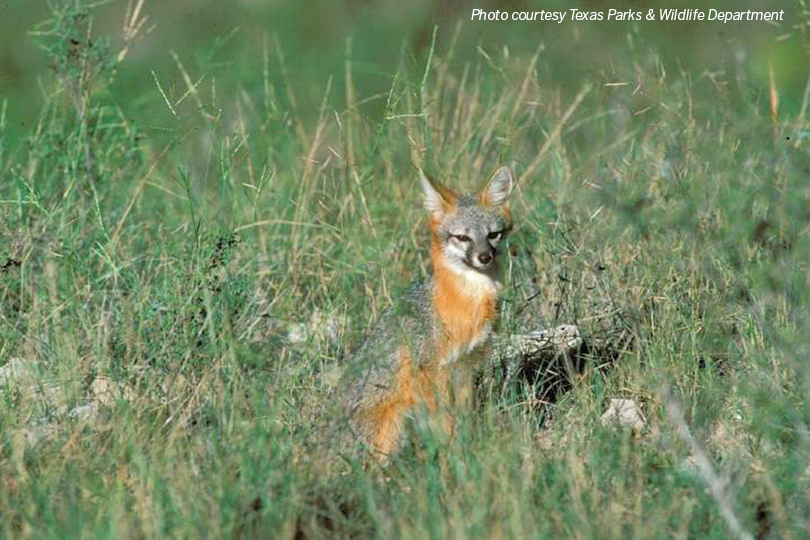By Jennifer Whitlock
Field Editor
The word “hunting” usually evokes crisp fall mornings spent huddled in a deer blind or warm, sunshine-filled afternoons waiting for dove to fly. But more options exist for hunters in Texas.
In fact, the Texas Parks and Wildlife Department (TPWD) has 21 categories of animals with hunting seasons in the state. From alligators to woodcocks, there’s sure to be a challenge for hunters of every skill level.
That’s in addition to what TPWD considers nongame species, which include bobcats, coyotes, squirrels, mountain lions and rabbits.
“Basically any animal [we don’t have specific seasons on] is considered nongame as long as it is not listed as threatened or endangered or some other sort of rare protection status applied to it,” Jonah Evans, TPWD’s Nongame and Rare Species program leader, said. “That could be anything from a coyote to a bobcat or mountain lion.”
A hunting license is not required to harvest nongame species in Texas. On private property, there are no closed seasons, bag limits or possession limits, and these animals may be hunted at any time by any lawful method. It is legal to hunt nongame species at night, but Evans suggested hunters contact local game wardens ahead of time.
When it comes to hunting leases or wildlife properties, some individuals choose to extensively hunt nuisance or predator species like coyotes, bobcats and mountain lions. While removing predators is sometimes necessary to help wildlife managers establish other species, Evans said it’s only one of the tools available in a land management toolbox.
“Just like a doctor gives you a medicine based on your ailment to attack that one specific problem, we believe predator control should be approached in the same way. If you’re doing it for quail, you do it until the quail population reaches your goal, and then you can start backing off,” he said. “Because if you’ve provided water and shelter and done enough prescriptive management, the quail should be able to sustain themselves just fine with some predation.”
Putting too much pressure on predator populations may have unintended consequences like altering coyote pack structures and accidentally increasing their birth rate, according to Evans. Those species also eat snakes, lizards, rats and mice, which may become overpopulated and, in turn, begin to overhunt more-desirable species.
Although exotic species such as aoudad sheep, axis deer, elk, blackbuck and nilgai antelope are considered nongame species, hunters must have the landowner’s permission and possess a valid hunting license to hunt these animals on private property. Exotic fowl, including ratites like emu or ostrich, also require a hunting license.
A lesser-known class of animals with a Texas hunting season is the furbearing species. TPWD classifies the badger, beaver, fox, mink, muskrat, nutria, opossum, otter, raccoon, ring-tailed cat, skunk and civet cat/spotted skunk as furbearing species.
Evans noted although gray foxes and raccoons are on the furbearing species list, landowners or their agents may take nuisance furbearing animals at any time without the need for a hunting or trapping license.
Those with a hunting license may take any animal on the TPWD furbearing species list recreationally between Sept. 1, 2021 and Aug. 31, 2022. Recreational harvesting means the carcass or pelt will not be sold, and there are no bag or possession limits for this purpose.
If an individual is interested in commercially harvesting furbearing animals, Evans said they must obtain a trapping license and abide by the following seasons:
- nutria: Sept. 1–Aug. 31
- beaver: Oct. 1–May 31
- all other furbearers: Nov. 1–March 31.
“This only applies if the person’s intent is to harvest the animal for the purpose of selling its fur,” he said. “It’s a very small, sort of niche market, so we don’t sell that many trapper licenses—maybe 1,000 or so each year. There’s no price for furs right now, so there’s very little interest from people who are trapping for the purpose of making income anymore.”
In addition to mammals, there are many less-common migratory bird species to hunt in Texas. Those include the common snipe, rails, gallinules and moorhens and woodcocks. Each classification has seasons, hunting hours and bag limits, which can be found in TPWD’s Outdoor Annual.
“Some people get enjoyment out of hunting a wide variety of different species,” Evans said. “We don’t all have to just be deer hunters or focus on one thing. There are so many hunting opportunities for Texans, so we would definitely encourage people to get out there and take advantage of that.”
All Texas hunting, fishing and boating regulations are available in the Outdoor Annual, which is available as a mobile app and online at outdoorannual.com.

